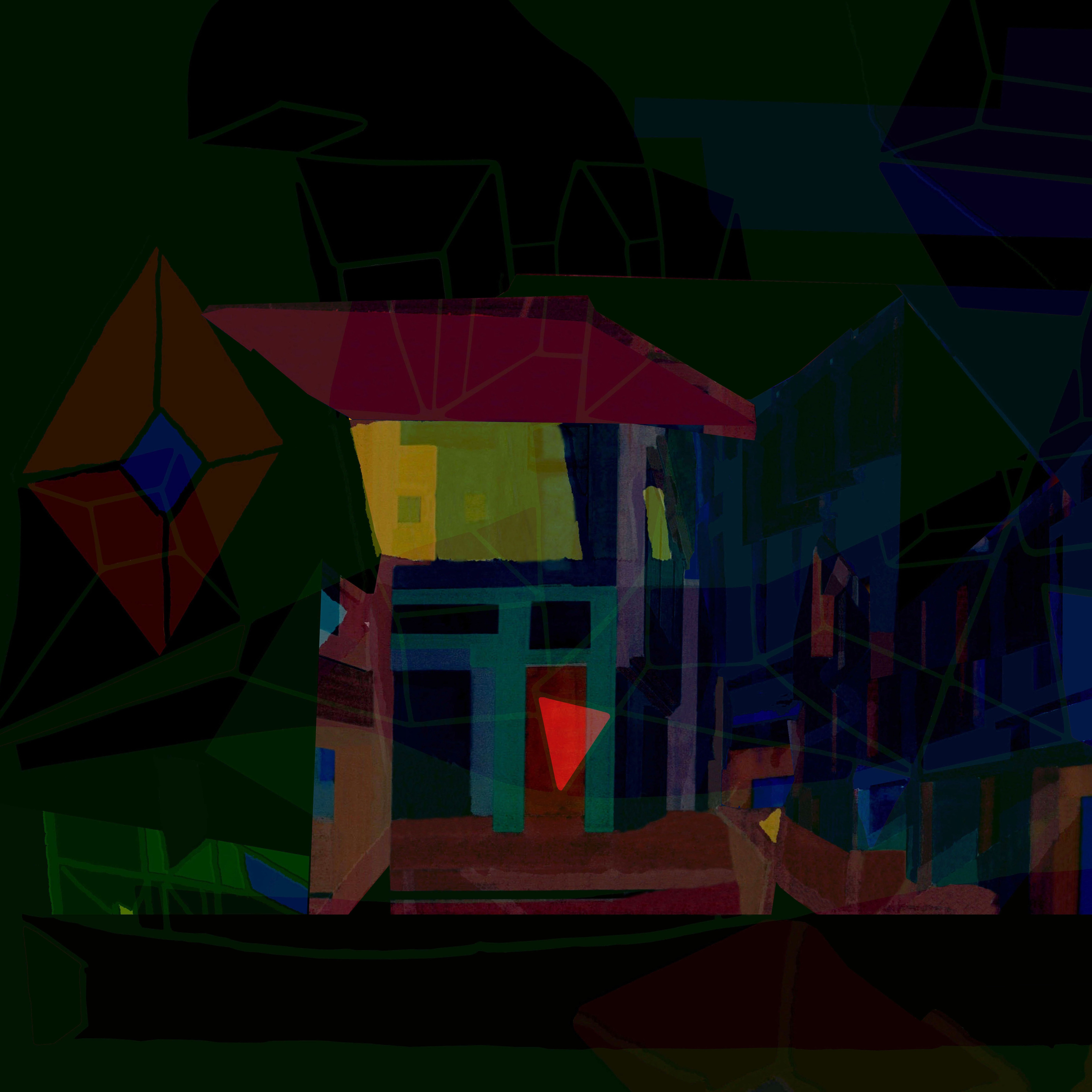Balkrishna Doshi
Remnants of Memories VII, 2021
Mixed media on canvas
54 x 54 in / 137 x 137 cm
An urbanist, academician and illustrious architect, Balkrishna Doshi is among the few pioneers of modern architecture in India and is regarded as a national treasure in the field. Doshi has orchestrated innumerable projects across scales and significance, developing an early commitment to sustainability and the relationship between space and culture, honouring a sense of the local even while channelling Western inspirations and outlooks. He has consequently created a hybrid visual language strongly embedded in place, earning him countless prestigious awards over his career and enabling him to make instrumental contributions to architectural discourse worldwide.
However, for the illustrious Balkrishna Doshi, before there was architecture, there was art. While enrolled at an art school in India, an observant painting teacher encouraged Doshi to study architecture, but even as his prowess grew publicly, in skill, passion and magnitude, Doshi never abandoned drawing and painting as wholesome forms of self-expression. Over the last decade, Doshi has embraced a fine arts practice that translates into a myriad of expressions, from saturated paintings and spontaneous drawings to surrealist sculptures.
This recent body of work begins from recognizable impressions of his earlier miniature drawings and blur into both colourful and colourless planes and fragmented forms. Their dream-like composition is drawn from his innermost experiences over the years, especially his childhood, where the geometries create visual illusions and the surrealist underpinnings appear more concerned with containment and play than the conveyance of meaning. These works invoke a gamut of moods, seasons and spatial movements through the means of volumes, texture, colour and proportion, while the overlays of fragments, the play of opacity and transparency and the moving lines reflect his deep-rooted urbanist temperament.
Doshi’s artworks edge towards biographical explorations, encrusted with remnants of memories as an artistic memoir of his life. About these instincts Doshi says, ‘For me there are many stories dispersed on the canvas yet connected – they are my unique mind maps of memories. I try to create multiple relationships out of these fragments to navigate narratives between heterogeneous homogeneity.’
Born in 1927 in Pune, Balkrishna Vithaldas Doshi, or Balkrishna Doshi studied architecture at the Sir J.J. School of Architecture in Mumbai. He is the first Indian architect to be awarded the prestigious Pritzker Prize in 2018, along with the Padma Shri, the Padma Bhushan, the Ordre des Arts et des Lettres, the Prime Minister’s National Award for Excellence in Urban Planning and Design, a Gold Medal from the Indian Institute of Architects, the Global Award for Lifetime Achievement for Sustainable Architecture, and the Aga Khan Award for Architecture. He is a fellow of the Royal Institute of British Architects as well as the Indian Institute of Architects, and an honorary fellow of the American institute of Architects. Doshi worked for four years with Le Corbusier as senior designer (1951–54) in Paris and four more years in India to supervise the latter’s projects in Ahmedabad. He also worked with Louis Kahn as an associate to build the Indian Institute of Management, Ahmedabad, and they continued to collaborate for over a decade. He founded his own practice, Vastushilpa, in 1956 with two architects. Today Vastushilpa has five partners spanning three generations and has sixty employees. Together they have completed more than 100 projects since the inception of the firm. Some of his most famous constructions include IIM Bangalore, IIM Udaipur, the National Institute of Fashion Technology, New Delhi, the Tagore Memorial Hall in Ahmedabad, the IFFCO Township of Kalol, Aranya Low Cost Housing in Indore and the famously renowned Amdavad di Gufa featuring the work of M.F. Husain, to name a few. Doshi also established the Vastushilpa Foundation for Studies and Research in Environmental Design to evolve indigenous design and planning standards for built environments appropriate to the socio-cultural and environmental milieu of India. Today, it serves as an effective link between academics and professional consultants. The institute has done pioneering work in low cost housing, documentation and city planning. Together with his architectural work, his drawings and paintings have also been exhibited at various museums worldwide and are part of international collections. A retrospective of his works titled Celebrating Habitat: The Real, the Virtual and the Imaginary and Balkrishna Doshi: Architecture for the People was shown at the National Gallery of Modern Art, New Delhi (2014); the Power Station of Art Shanghai, China (2017); Vitra Design Museum, Weil Am Rhein (2019); Architekturmuseum at Pinakothek de Moderne, Munich (2019); Architekturzentrum, Museum Quartier, Vienna (2020); and Wrightwood659, Chicago (2020). Doshi lives and works in Ahmedabad, India.



